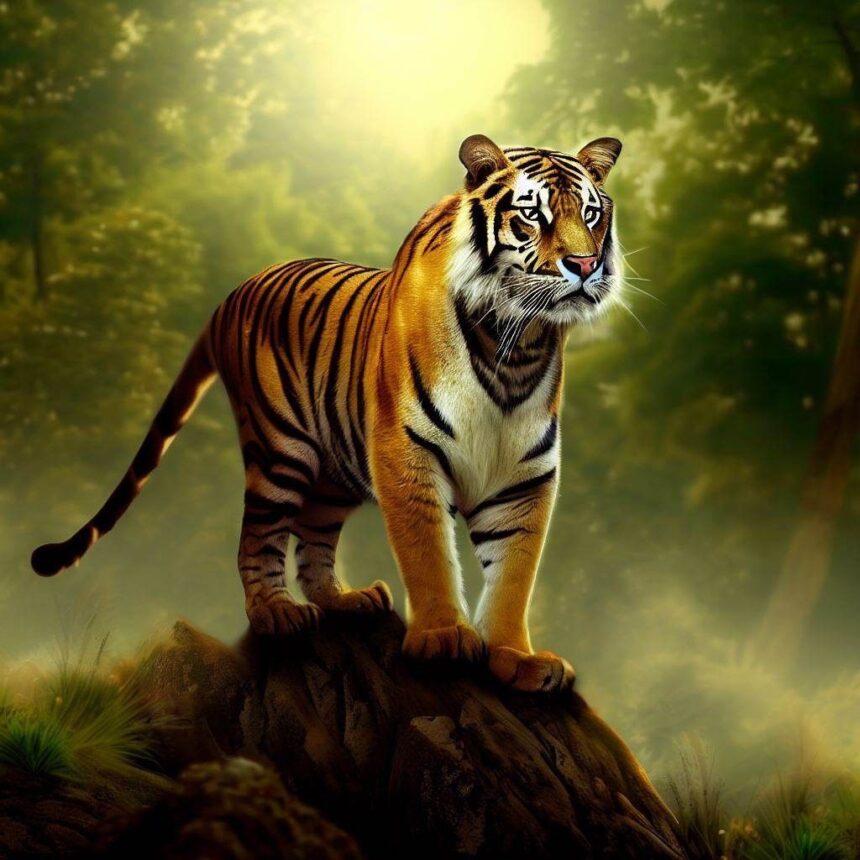Powerful Facts About the National Animal of India That Will Inspire You
India, a land of diversity and rich heritage, is home to a variety of flora and fauna that symbolize the country’s culture, values, and natural strength. Among these symbols, the National Animal of India – the Bengal Tiger – holds a special place. Its majestic presence not only showcases India’s wildlife richness but also serves as a reminder of the importance of conservation and ecological balance. Let’s explore everything you need to know about India’s National Animal, from history and facts to its impact on daily life and society.
- History of the National Animal of India
- Interesting Facts About the Bengal Tiger
- Timeline of Key Events Related to the National Animal
- Significance of the National Animal
- FAQs About the National Animal of India
- Impact of the National Animal on Daily Life
- Observance and Celebrations
- Conclusion: Why the Bengal Tiger Matters
History of the National Animal of India
The Bengal Tiger (Panthera tigris tigris) was officially declared the National Animal of India in 1973. This decision was based on several reasons:
Symbol of Strength and Power: The tiger embodies courage, strength, agility, and grace – qualities that reflect the essence of India.
Cultural Significance: Tigers have been integral to Indian mythology and folklore. They appear in stories, traditional paintings, and even in temple carvings across India.
Wildlife Conservation Message: Selecting the tiger as the national animal drew attention to the urgent need for protecting wildlife, especially since tigers were becoming endangered.
The declaration was made alongside the launch of Project Tiger, an ambitious initiative aimed at preserving tigers and their natural habitats.
Interesting Facts About the Bengal Tiger
Largest Cat in the World: The Bengal Tiger is the most powerful and largest member of the cat family, capable of reaching up to 10 feet in length including the tail.
Unique Stripes: No two tigers have the same stripes – each pattern is unique, much like human fingerprints.
Exceptional Hunters: Tigers can run at speeds of up to 60 km/h in short bursts and are excellent swimmers.
Top Predator: Tigers play a crucial role in maintaining ecological balance by controlling populations of herbivores.
Longevity: In the wild, Bengal Tigers can live up to 15 years, and even longer in captivity.
National Pride: India hosts the largest population of wild tigers in the world, emphasizing its global conservation importance.
Solitary Creatures: Unlike lions, tigers are solitary animals, representing independence and self-reliance.
Timeline of Key Events Related to the National Animal
1973: Bengal Tiger declared as the National Animal of India.
1973: Launch of Project Tiger to protect tiger populations.
1980s: Creation of tiger reserves such as Jim Corbett National Park, Ranthambore National Park, and Sundarbans Reserve.
2006: Tiger population census conducted, showing positive trends in some states due to conservation.
2022: India reports the largest increase in tiger population globally, reinforcing successful conservation efforts.
Significance of the National Animal
The Bengal Tiger is much more than a wildlife species; it carries multiple layers of significance:
Cultural Significance: Tigers appear in Indian epics, folklore, and art, symbolizing bravery and protection.
Environmental Significance: Tigers maintain the balance in forests, ensuring the ecosystem thrives.
National Pride: As a symbol, the tiger inspires citizens to embrace strength, resilience, and courage in the face of challenges.
Tourism Impact: Tiger reserves and national parks attract millions of visitors each year, boosting local economies and wildlife awareness.
Educational Importance: Awareness campaigns about the tiger teach children and adults about conservation and responsible behavior toward nature.
FAQs About the National Animal of India
Q1: Why is the Bengal Tiger the national animal of India?
A1: The tiger symbolizes strength, courage, and grace, and its selection highlights the importance of wildlife conservation.
Q2: Where are tigers mostly found in India?
A2: Tigers are primarily found in states like Madhya Pradesh, Uttarakhand, West Bengal, Karnataka, and Rajasthan.
Q3: How many tigers are left in India?
A3: According to the latest census, India has over 3,000 tigers, making it home to the largest population globally.
Q4: What is Project Tiger?
A4: Launched in 1973, Project Tiger is a government initiative aimed at protecting tigers and their habitats through reserves and anti-poaching measures.
Q5: Are tigers dangerous to humans?
A5: While tigers are powerful predators, they typically avoid humans. Conflicts arise only when their habitat is threatened.
Impact of the National Animal on Daily Life
The presence of the tiger as a national symbol influences daily life in several ways:
Conservation Awareness: People are more conscious about protecting forests, wildlife, and biodiversity.
Education and Inspiration: Stories and lessons about the tiger encourage children to develop qualities like courage, strength, and resilience.
Tourism and Economy: Tiger safaris and national parks provide livelihood opportunities for local communities.
Cultural Events: Festivals and exhibitions often feature the tiger, strengthening national pride and cultural identity.
Observance and Celebrations
While there is no specific “Tiger Day” nationally observed in India, Global Tiger Day (July 29) is celebrated worldwide, including in India, to raise awareness about tiger conservation. Activities include:
Tree planting campaigns
Awareness drives in schools and communities
Wildlife documentaries and exhibitions
Fundraising for tiger reserves and wildlife sanctuaries
Conclusion: Why the Bengal Tiger Matters
The Bengal Tiger is more than a majestic animal; it is a living symbol of India’s strength, courage, and natural heritage. Its conservation reminds us of the delicate balance between humans and nature and teaches lessons about responsibility, sustainability, and pride. Whether through education, tourism, or wildlife conservation, the tiger impacts daily life and society positively, inspiring millions to protect the environment for future generations.
By celebrating and respecting our national animal, we not only honor our culture but also contribute to a healthier, stronger, and more sustainable world.
Quick Recap: 7 Powerful Facts About the National Animal of India
Largest cat in the world.
Unique stripe patterns like fingerprints.
Excellent hunters and swimmers.
Key top predator for ecological balance.
Lives up to 15 years in the wild.
India hosts the largest population globally.
Solitary and independent nature symbolizes courage.








